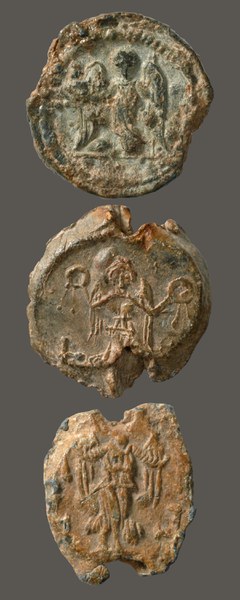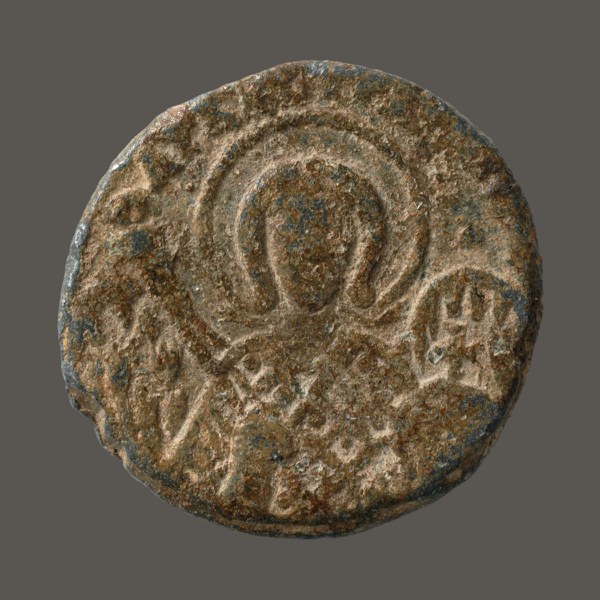
One of the earliest developments of religious iconography was the regendering of the deeply classical Winged Victory. Appearing on coins throughout the entire chronological span of the Roman Empire, she was retained by emperors after they themselves embraced Christianity. Victory eventually carried a cross, mixing the pagan past with the Christian present. At the beginning of the sixth century Victory became a male angel, signaled by a change in clothing. Facing forward, he holds a cross or staff with a Christogram as well as a globus cruciger.

The image of Victory would recur on coins throughout the sixth century, although it was relegated to fractional gold denominations. On seals, however, Victory made only a brief reappearance under Justinian I and his nephew, Justin II, holding wreaths in both hands and flanked by crosses. After Justin II's reign, this vestige of the classical past disappeared and was replaced by the Mother of God.
An angel occurs on one later example, although it is unrelated to this early transformation of the pagan Victory figure. The angel appears on a token of Leo VI and his brother Alexander. This specimen does not correspond to any of Leo’s seals or coins.






